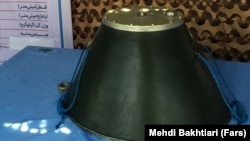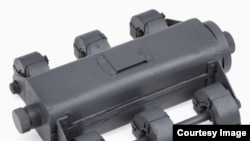On June 13 the U.S. Central Command published a statement alleging that an Iranian boat removed an “unexploded limpet mine, ” from the M/T Kokuka Courageous. What are limpet mines and does Iran have such devices?
A limpet mine named after the conically shaped sea creature that sticks to rocks is a military device that contains an explosive charge and can be attached to a vessel. Powerful magnets make it possible for the case with the explosives to be attached to the body of a ship or any other vehicle. Limpet mines can be designed to be triggered in various ways either through electronic means with timers or mechanical means where the explosion is triggered after a certain distance.
Limpet mines were extensively used in naval warfare during World War II by special operations commandos. In 1943, during World War II the Royal Australian Navy conducted Operation Jaywick, which relied on the use of limpet mines. Using a confiscated motor sampan, a commando of fourteen Australians sailors disguised as local fisherman were able to enter the port of Singapore, which was then under Japanese control.
Once in the port, the commandos were able to attach limpet mines to the ships by covertly sneaking up to the hull at night. The operation resulted in the damage or sinking of at least six Japanese ships
An article published in October 2015 by Fars new agency covered an exhibition organized by the Iranian Navy. The exhibition, held in northern Tehran on a 130-hectare plot of land, was according to Iranian Navy “the largest and most extensive ever.” The article detailed various weapons system owned by the Iranian military. Various types of rockets and missiles are displayed, with some bearing banners with ideological slogans aimed at the United States
One item on display is a limpet mine titled “Sticking Mine.” According to the accompanying posters, the device is produced by the Industrial Research & Self Sufficiency Jihad Organization associated with the Iranian Navy. The device weighs 42 kilos and is made of aluminum and steel.
A 2010 article from ISNA covers the military exercises conducted by Iran with observers from Iraq, Qatar and Oman. One of the points of the exercises which was a in Gulf of Oman was the placing of limpet mines on a “predetermined target.”
Photos released by the U.S. Military show a triangular shape on the side of M/V Kokuka Courageous. Iran has denied the allegations that it was behind the damaging of two tankers in the Gulf of Oman.









